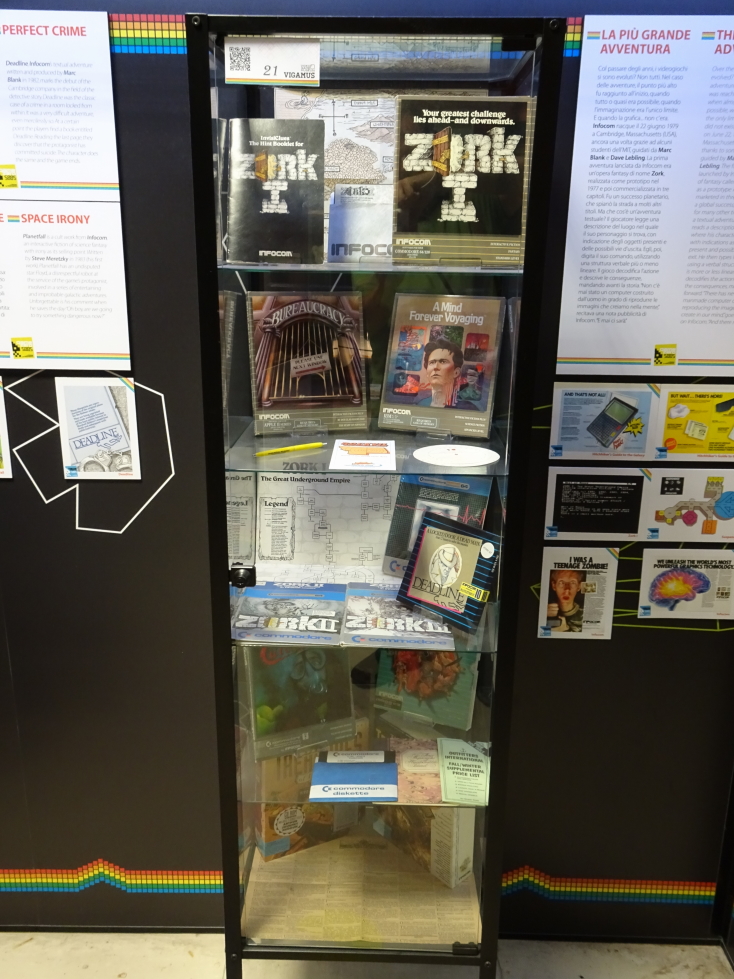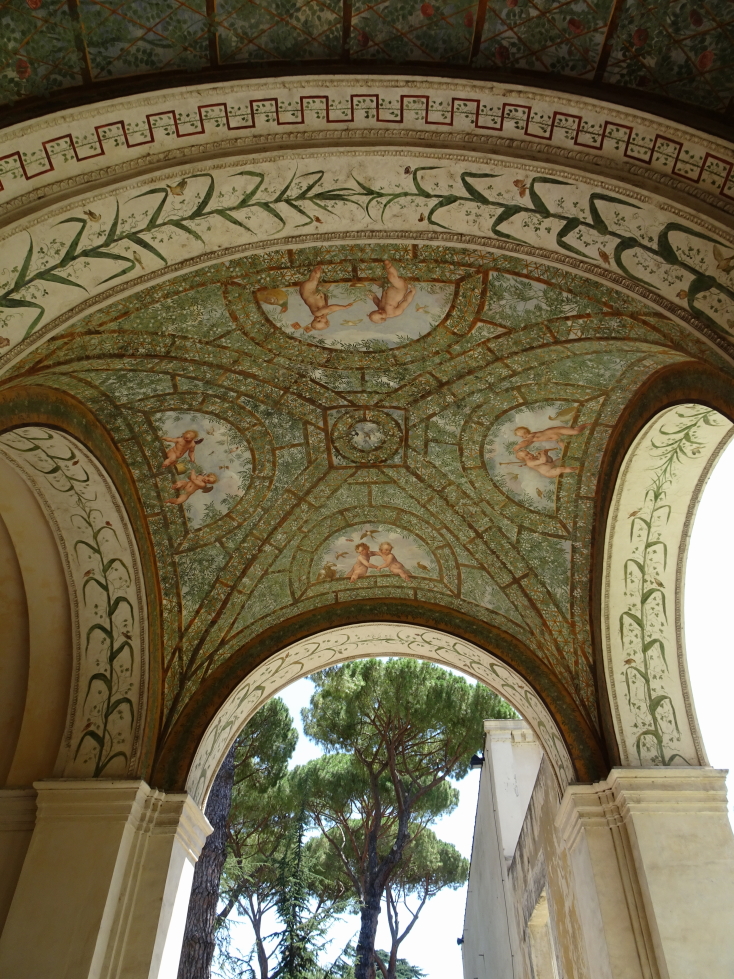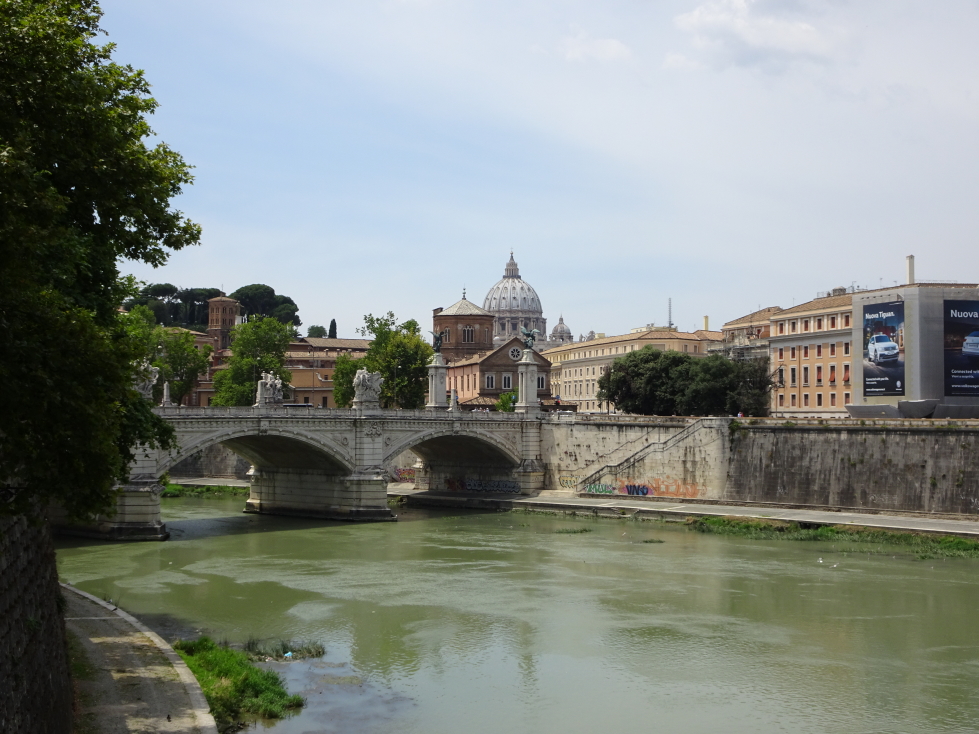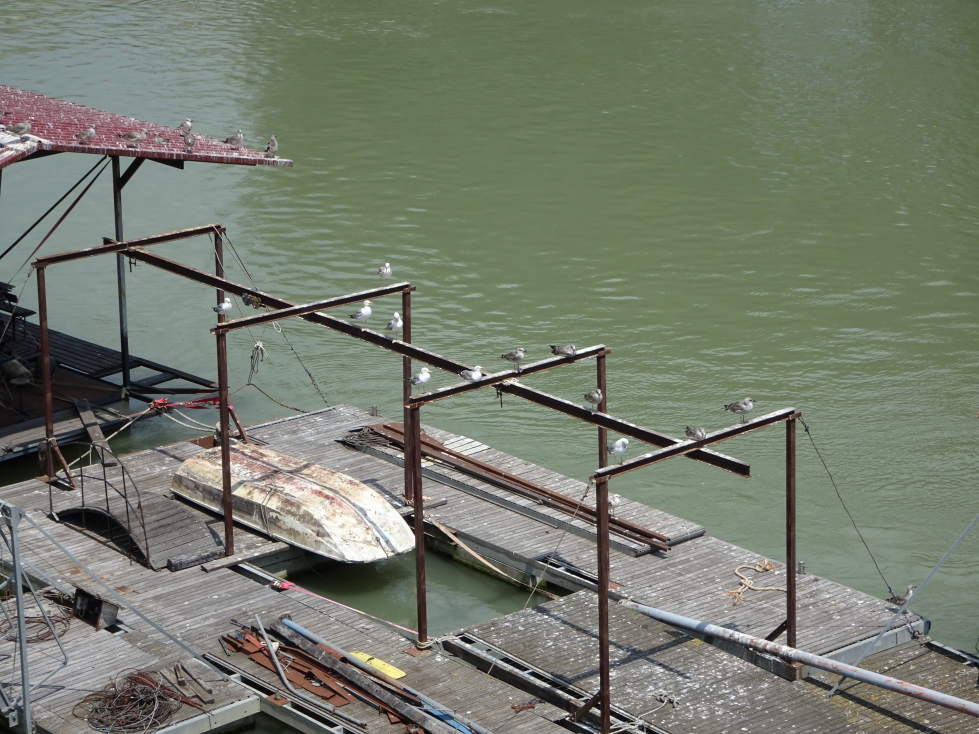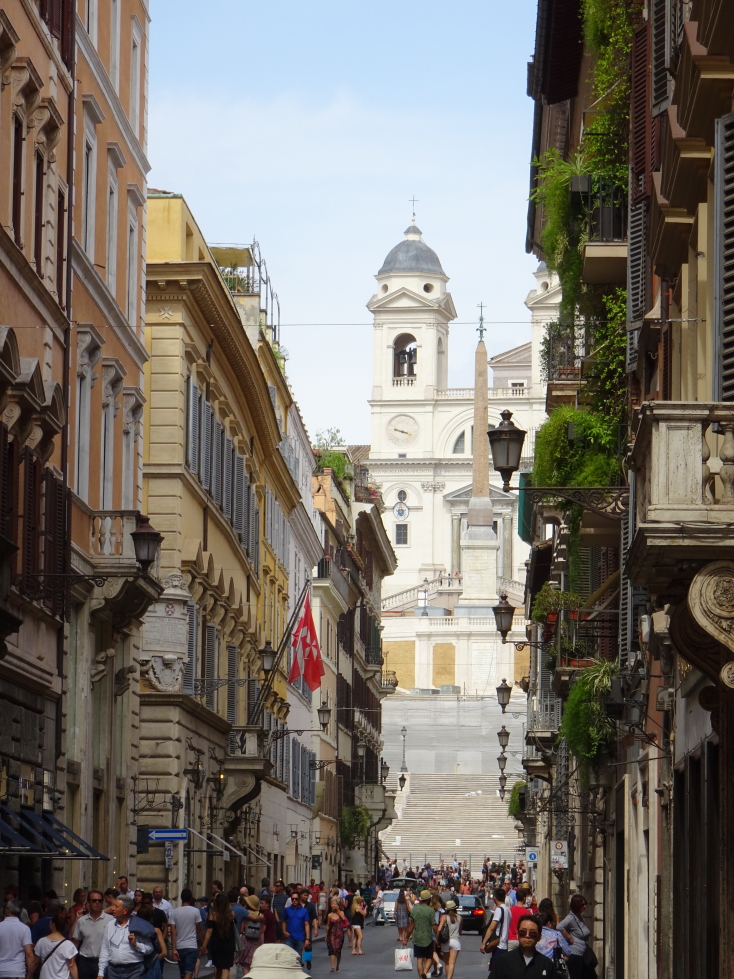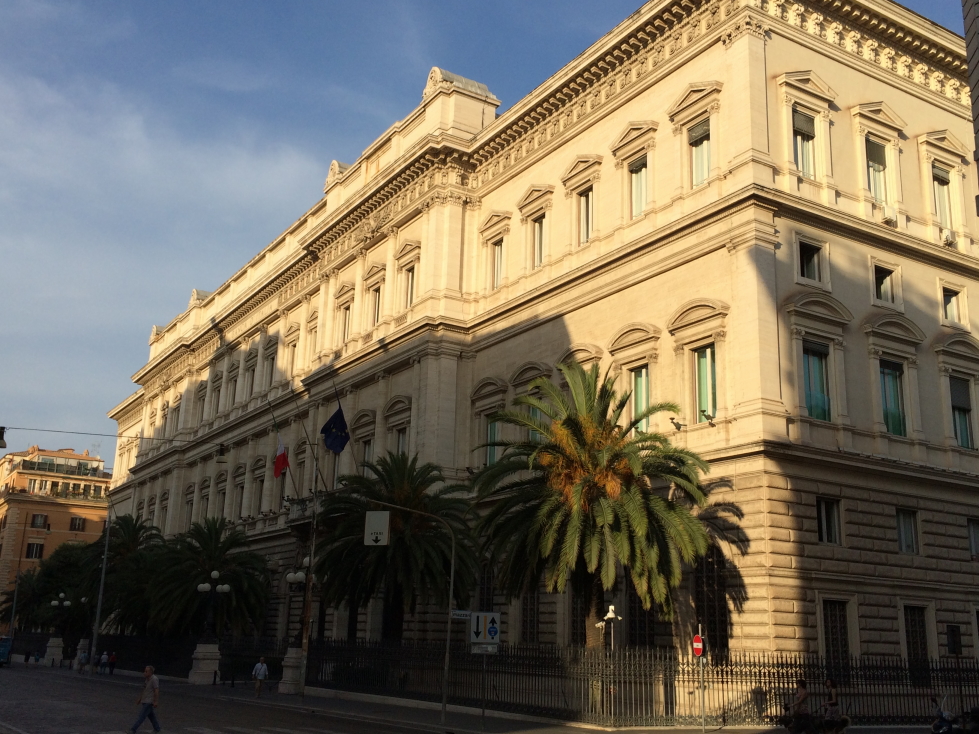We woke up at 8a and grabbed breakfast at the hotel. Left the hotel at about 10:15a for a quick walkabout. As we had only until 11a before we had to be back at the hotel we walked to the nearby Piazza del Quirinale, home to a fountain from 1818 and an obelisk moved from the Campus Martius. We continued on past Trevi Fountain to the Column of Marcus Aurelius, a 97 foot tall column erected by 193AD celebrating victory in the Danubian wars. The carvings were amazing and showed a variety of things from soldiers to civilians to boats on the Danube. There were small slits in the stone all the way up — the column itself contained a spiral staircase.

Obelisk in the Piazza del Quirinale

Column of Marcus Aurelius from the 2nd century AD depicting victory in the Danubian wars

Detail of the column, note the slits giving light and air to the stairs within

Closeup of the column showing soldiers

Another closeup, this time of boats
Once back at the hotel we checked out, leaving our luggage with the hotel and taking only a backpack with us to Vienna. We waited in the lobby / bar area of the hotel until noon when the car to FCO airport picked us up. The driver was great and spoke excellent English as he had lived on Long Island for a couple of years. This allowed us to carry on an extensive conversation about topics like Rome traffic versus that of other cities and also guns in America versus other countries. Along the route we passed the Circus Maximus (with stage still set up for David Gilmour including protective screening so people couldn’t get a free concert) and the absolutely massive Baths of Caracalla which were built from 212 to 217AD and covered 1.1 million square feet. Impressive!

Door to the bathroom which was surprisingly large inside — the Turdis

Lobby / bar area of the Hotel Bolivar, Rome
On arrival at FCO we checked in at Austrian Airlines (after some initial confusion on where to go) quickly. Security was also a breeze and we headed for the gates. We got a quick lunch, myself eating cheese pizza and Gentta a cheese and ham pizza (tuscana). Chased it down with some coffee gelato while Genetta had some chips and water. The restroom had toilets with seats that sprung up automatically so it was impossible to do #1 with the seat down — brilliant!

Tail fins of the Alitalia fleet
On boarding the plane for our 3:05p flight we noted that classical music was playing, similar to the flight on the Indian plane in January which played sitar music. It was pleasant and the flight went very smoothly. We got some decent views of the Italian countryside but due to where we were sitting didn’t get a good look at Rome or Ostia. Sadly clouds socked in most of the trip over the Alps, clearing only as we got nearer Vienna and broke through the cloud deck. The plane’s magazine did have a… somewhat suggestive… photograph in it that made me giggle. Clearly the Austrians are a little less uptight about some topics than America is! I also had a hazelnut wafer cookie on the flight that was actually very tasty.

Hilly Italian countryside

Marshland near a large lake in Italy

A small Austrian village near Vienna
We landed about 4:30p and a car was there to pick us up. Didn’t have to go through customs or anything and as we had no bags to pickup we sailed through the airport. The short fifteen minute drive to Vienna was pleasant though the driver did not speak much English so conversation was limited. Did see a billboard with “Achtung!” on it, immediately made me think of the old C64 game “Castle Wolfenstein”. The weather was much, much cooler than Rome — in the high 60s to 70F versus Rome’s mid-90s and the clouds began to break up a little which was great.
We got to the Appartement-Hotel an der Riemergasse right at 5p and checked in. It was a very efficient process and the lady at the desk helped us get tickets for the Mozart string quartet at the Mozarthaus for that evening. I hadn’t reserved ahead of time as I was worried that any delays getting to Vienna would have us miss the concert, and couldn’t do the other two nights we were in Vienna as those were days off for the quartet. Was so happy things seemed to be working out!
Went up the cool old-timey elevator with iron caging to our apartment. We were very pleased with the apartment, multiple bathrooms, a living room, kitchen, large bedroom, etc. Even a chocolate with Mozart’s likeness and some water (sparkling and still). We immediately set out for an ATM and then ate at McDonalds as we were very pressed for time. We both had large fries and a small Coke while Genetta had a McChicken and I had a Big Mac. Wasn’t happy to pay a half-euro to use the restroom, but at least they were clean. In fact, we were struck by how clean — and empty-feeling — Vienna was. The people seemed to keep to themselves much more than in Rome, like they were in their own world. I’m still not sure which I prefer.

Our apartment’s bedroom

Our apartment’s living room

Even the graffiti in Vienna is musical

The street scene near our Apartment — very clean and empty!

Another street in Vienna

Elaborate tile roof of the Domkirche St. Stephan, St. Stephen’s Cathedral
The Mozarthaus was a very tiny room belonging to a small Teutonic church. It was where Mozart first played when he arrived in Vienna in 1781. The room was opulently decorated. A small stage with four chairs, music stands, and a lamp were in the front of the room. Six rows of about ten or twelve chairs each faced the stage, backed by two large windows that let in the evening light. A gorgeous chandelier hung above. It was a very intimate space.

Entrance to the Mozarthaus

The stage at the Mozarthaus

Chandelier and painted ceiling at the Mozarthaus

One last look at the stage at the Mozarthaus
The quartet came in and took their places. The first violin was a white man with a ponytail. He did most of the talking, first in German then in English, rocking back and forth as he spoke. The 2nd violin was an Asian woman, the viola a white woman, and the cello a white man with glasses and hair in his eyes. They were all dressed in Mozart era (late 1700s) dress, all sporting long coats and frilly neckerchiefs. They played Mozart and Haydn. They were amazing! In fact, I didn’t nod off even once during the hour — that’s quite the feat for me, especially given how exhausted I was!
Leaving the Mozarthaus we wandered to Domkirche St. Stephan, St. Stephen’s Cathedral. It was magnificent with an amazing tiled roof and intricate stone work around windows and a clock. The square the cathedral was centered in, Stephansplatz, had a mix of office buildings and stores, including a large gift shop with a dizzying array of postcards and magnets. We dutifully bought some of each.

Stephansplatz, Vienna, Austria

Stained glass window of St. Stephen’s Cathedral

Interesting clock at St. Stephen’s Cathedral

Amazing stone filigree adorned the cathedral’s windows

Statue on the exterior of St. Stephen’s Cathedral
We ducked into the cathedral for a few minutes. Tons of votive candles flickered in the near darkness while a service was being delivered in German. It was very… haunting?

Closeup of the cathedral’s amazing tiled roof

Front of St. Stephen’s Cathedral, Vienna

Horses taking a break form hauling tourists around

St. Stephen’s Cathedral at dusk
Next we got some gelato at Zanoni and Zanoni. It was OK. Genetta got some apfelstrudel which she enjoyed. I had a few juvenile teehee moments at seeing words with the phrase “fahrt” in them — einfahrt, ausfahrt, gut fahrt! Genetta asked me to grow up, haha.

Huge Apfelstrudel!

Mouth watering, it was all I could do to resist

Well, the Austrians have it right — jogging hurts!

Mozart’s likeness is everywhere in Vienna
Headed north towards the river (a small offshoot of the Danube) and got some noodles from a place called Happy Noodles. Genetta had chicken and I had red curry chicken — perhaps not the brightest move on my part. Tasty though! Headed back to the room to upload pictures and blog. The apartment had an amazing Internet connection, far better than the Hotel Bolivar’s. Yay!







